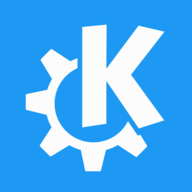I have a Thinkpad T480 that I’m very happy with. I believe it’s around 7 or 8 years old, but it works great. Unlike most laptops, it doesn’t have soldered RAM, so it’s easily upgraded. One downside is that most units don’t come with a lot of storage, so you’ll probably want to get a larger drive. I spent around $200 on mine plus another $100 for the SSD. It’s a great inexpensive laptop that’ll last for years.
Formerly MintRaccoon@kbin.social
- 0 Posts
- 17 Comments


My understanding of what happens when using separate drives is that one drive is given priority in the BIOS/UEFI menu and then people just use the device menu when using the secondary drive. Windows really only cares about its own drive with this setup, so the bootloader on the other drive is safe. I’ve never actually done this myself since the only system I dual boot on is my laptop and it only has one drive installed. To answer your second question, I just use my bootloader (GRUB in my case) to select which OS I boot into.


Some people recommend having Linux and Windows on entirely separate drives since Windows doesn’t always like to play nicely with Linux. The only issue I’ve ever had with them on the same drive was the time Windows ate my bootloader when upgrading from Vista to 7. Another thing is that you should install Windows first because it will eat the bootloader (as previously mentioned) if Linux is installed first. I also recommend keeping a flash drive with System Rescue CD installed handy in case you have to repair the bootloader.
Edit: Typo


Thank you for letting me know. I wasn’t aware since I’ve only every used it on Linux.


I wouldn’t recommend Clementine since it’s unmaintained. You might want to consider Strawberry instead, which is an updated fork of Clementine.
That having been said, I actually use Audacious because I like using old WinAmp skins.
This is what I do with my mom and her boyfriend. I’ve had them on Linux for a few years now and neither have managed to break anything.
In Yakuake’s settings.
I had to set the transparency in individual color schemes to get a transparent background.


Cinnamon or Xfce are more similar to Windows’ user interface. Between those two, Xfce is more lightweight than Cinnamon. MATE is more for people who liked GNOME 2 and want that interface over what the current GNOME is.
Cinnamon would probably be the most friendly as a new user, but I personally haven’t used it in years and I’m not familiar with its current state.


I use Strawberry for mine.


Yo dawg, I heard you like emulating, so I put an emulator in your emulator so you can emulate while you emulate.
More or less. I think there are some differences between the Q and K based models, but they’re close enough to not require separate ports of Rockbox.
You should look into Rockbox. It’s an open source alternative firmware for a variety of portable media players that adds features such as support for more file formats (and it runs Doom). As for which supported players I’d recommend then maybe a flash modded iPod or an AIGO Eros Q or K (also sold as the HIFI WALKER H2, Surfans F20, or AGPTek H3).


Are you referring to a drawing tablet? If so, then a good number of ones from the better known brands are supported by the kernel by default. Your safest bet though is Wacom. Wacom is definitely the best supported brand, but it tends to be more expensive than other brands (such as XP-pen and Huion). Non-Wacom branded tablets may require a little bit more initial configuration, like adding a udev rule (I had to do that for my Huion Inspiroy Ink).


Qmmp can use them too.


In my experience larger packages (in terms of file space requirements) install slower, but download speed is a factor there too.
Cancelling compilation is safe to my knowledge. No changes were made as you stated. Just remember that the downloaded files will probably still be in your cache afterwards, so you may want to remove that with paccache.
You mention “partial installs,” but the actual issue is partial upgrades. A partial upgrade is when you don’t upgrade the entire system, but only one or more packages. A partial install isn’t really a term people use, but could probably refer to installing a package without its dependencies being installed.


Support for Archos devices was removed from daily builds in 2020.